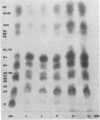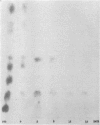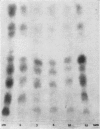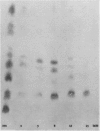Abstract
Fresh beef allowed to undergo microbial spoilage at 7 C showed decreases in quantity and types of amino acids as well as decreases in nucleotides when the initial number of bacteria per gram was high. When the initial number of bacteria was low, decreases were either not detectable or of low orders. It seems, therefore, that low-molecular-weight compounds of the above type support the growth of beef-spoilage bacteria rather than primary beef proteins. These low-molecular-weight compounds provide the probable sources of ammonia, hydrogen sulfide, and other such compounds associated with beef allowed to spoil at low temperatures.
Full text
PDF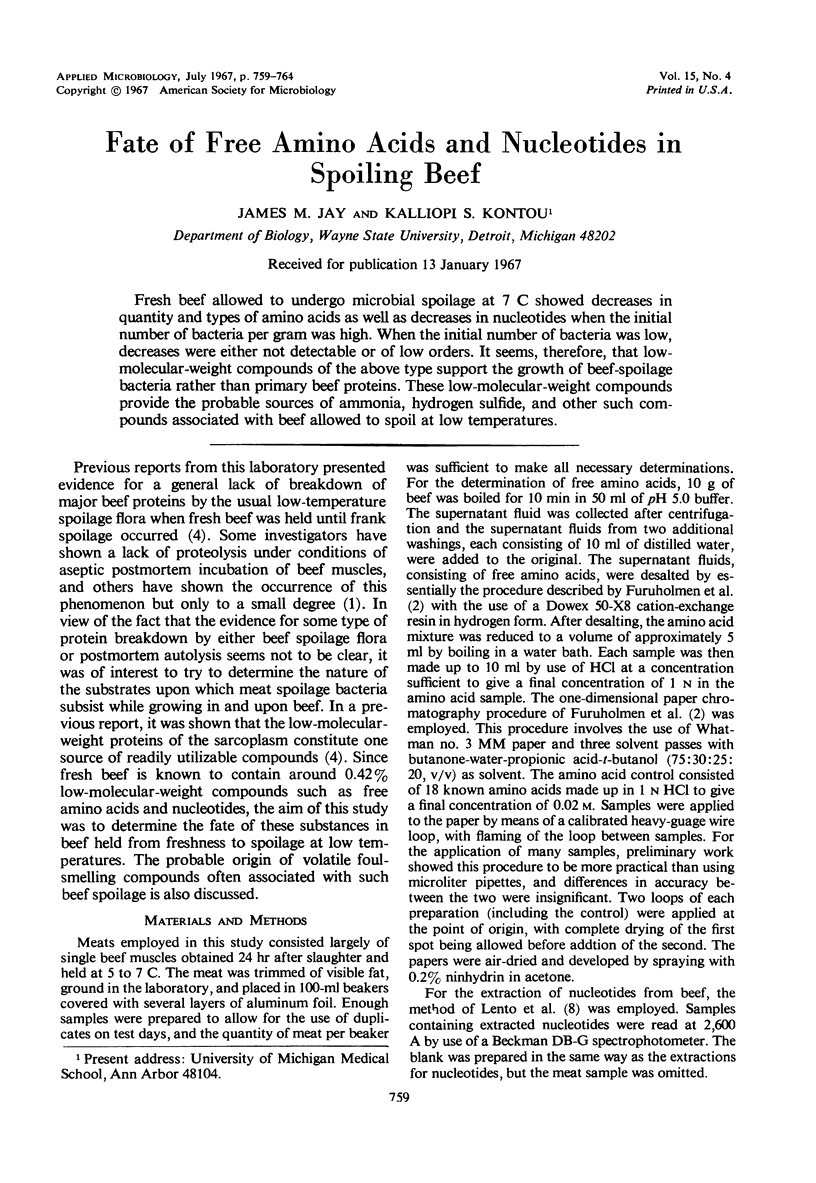

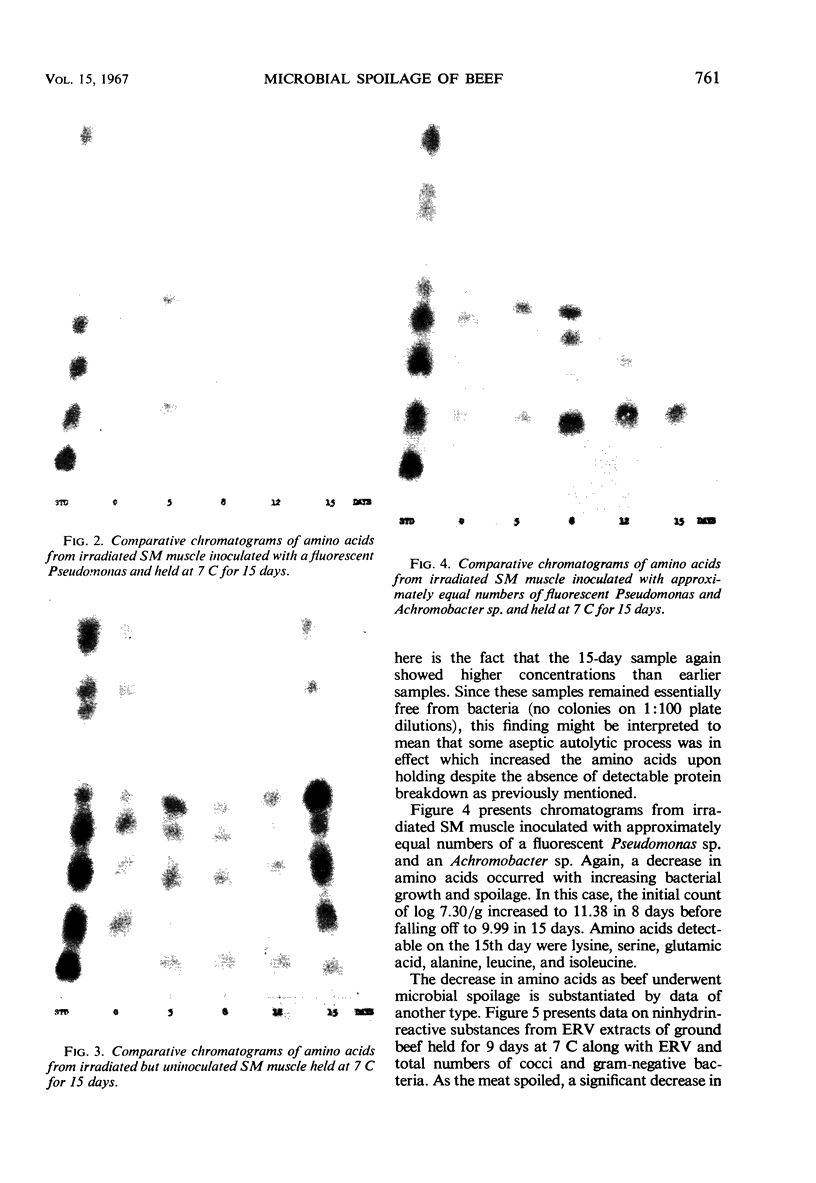
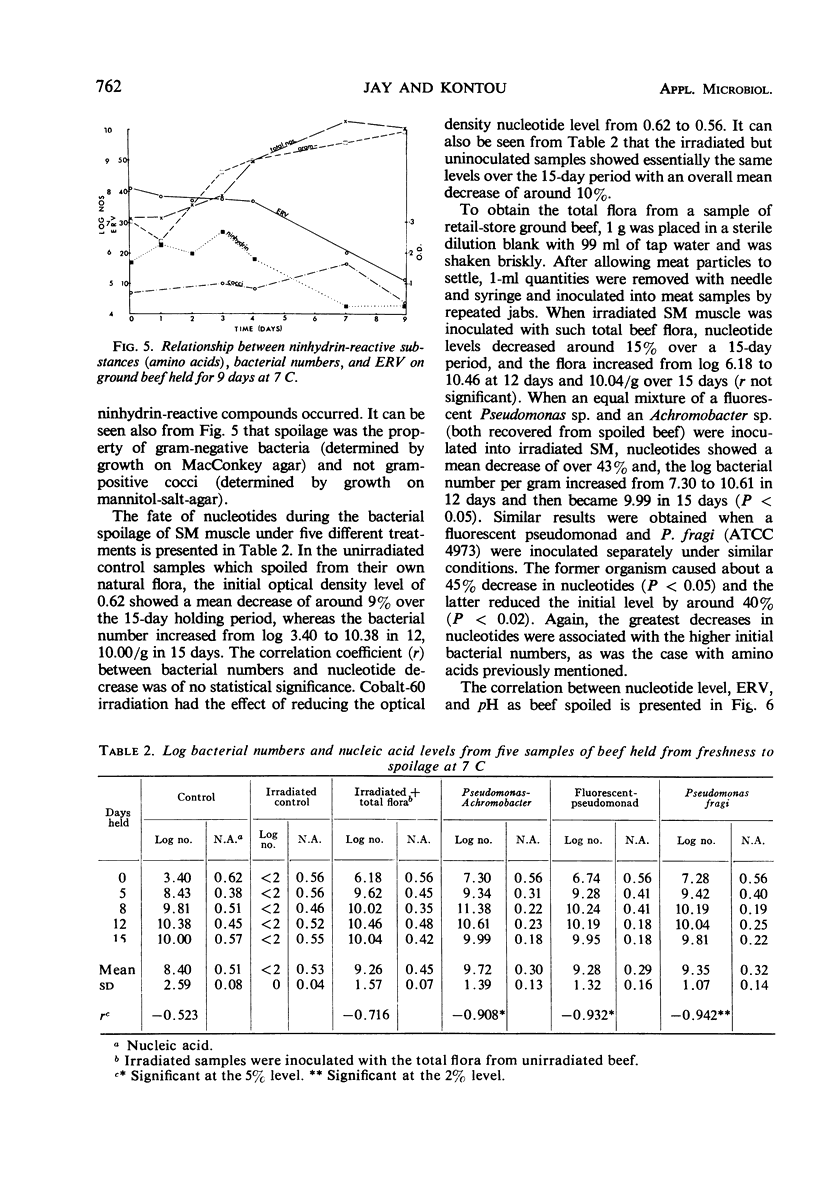
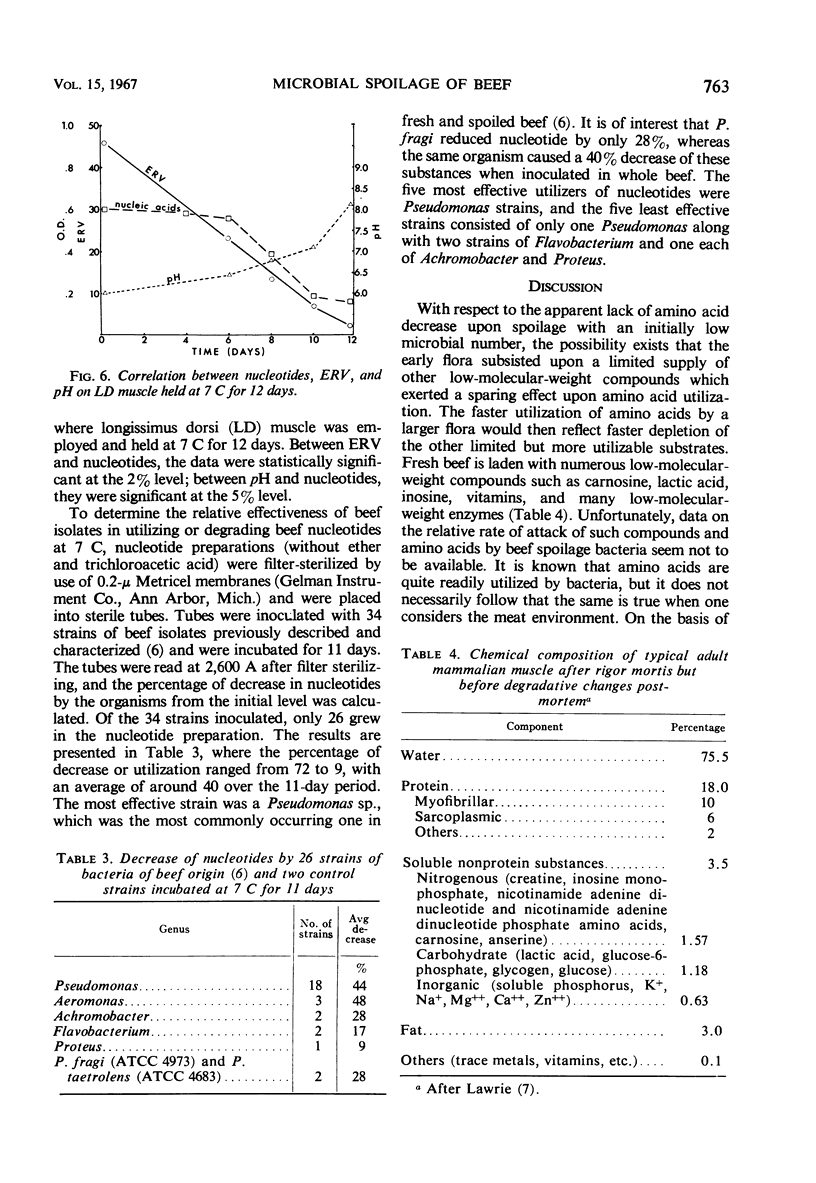
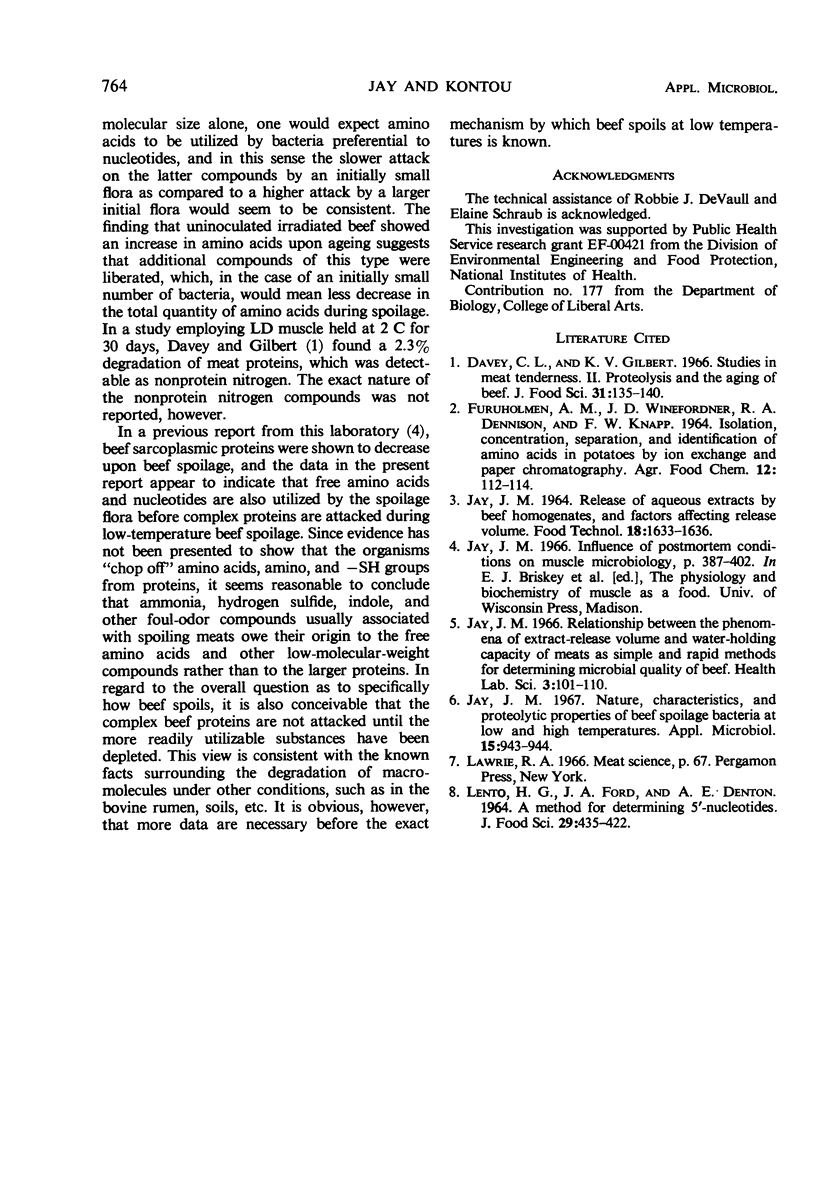
Images in this article
Selected References
These references are in PubMed. This may not be the complete list of references from this article.
- Jay J. M. Nature, characteristics, and proteolytic properties of beef spoilage bacteria at low and high temperatures. Appl Microbiol. 1967 Jul;15(4):943–944. doi: 10.1128/am.15.4.943-944.1967. [DOI] [PMC free article] [PubMed] [Google Scholar]
- Jay J. M. Relationship between the phenomena of extract-release volume and water-holding capacity of meats as simple and rapid methods for determining microbial quality of beef. Health Lab Sci. 1966 Apr;3(2):101–110. [PubMed] [Google Scholar]



